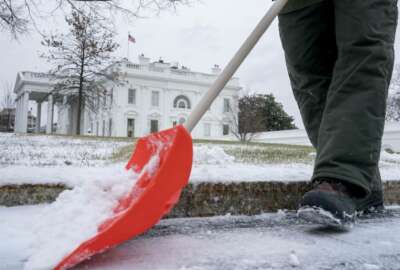
What’s taking so long on those new administrative leave options?
It's been more than two years since Congress agreed to overhaul federal administrative leave policies, but agencies are still missing the regulations needed to...
It’s been more than two years since Congress agreed to overhaul federal administrative leave policies, but agencies are still missing the regulations needed to implement some of the more transformative changes.
Those changes originally came in the form of the Administrative Leave Act, which Congress passed back in December 2016 after adding it to the annual defense authorization bill.
The Administrative Leave Act was supposed to create new categories of leave, called investigative or notice leave, for employees who are placed under agency investigation or are awaiting a decision on an adverse personnel action.
Specifically, it capped investigative or notice leave to 10 days a year for employees and set up a procedure for agencies to grant additional leave, between 30-to-90 days, to complete personnel investigations. The goal was to give federal employees the due process rights they deserve but limit paid time off for those who had potentially committed misconduct or some other offense, often at a great cost to the government. The law also encourages agencies to perform personnel investigations more quickly — or search for other ways to put employees under investigation back to work in other offices.
The Government Accountability Office in 2014, for example, said 263 employees had spent one-to-three years on paid administrative leave, to the tune of $31 million.
The 2016 law gave the Office of Personnel Management 270 days to prescribe new regulations, but the agency has missed that deadline.
One of the main reasons for the holdup, a Senate staffer told Federal News Network, is due to a challenge with the existing text of the Administrative Leave Act, which OPM, the Office of Management and Budget and other agencies have said would prevent employees in combat or those who work overseas from using paid leave to take time off for rest and recuperation — or to observe a foreign local holiday.
Sen. Tom Carper (D-Del.) introduced an amendment earlier this summer to address this challenge, and the Homeland Security and Governmental Affairs Committee attached it to a bill from Sen. James Lankford (R-Okla.). Lankford’s bill details another technical fix, which the Office of Personnel Management has said it needs to help agencies more easily hire student interns to federal jobs.
The amendment creates new categories called rest and recuperation leave and foreign holiday leave, which allow agencies to grant up to 20 days of paid time off a year for employees who work in a combat zone or high risk, high threat areas.
Agency heads would have sole discretion over the use of this leave, according to the amendment.
In addition, employees would also get up to five days a year to observe local holidays in a foreign area, if their agency head determines that working on that day would be inconsistent with local practice or not in the best interest of the U.S. or its diplomatic interests.
Rest and recuperation leave and foreign holiday leave would mostly apply to federal employees at the departments of Defense or State or the U.S. Agency for International Development.
The Lankford bill and technical administrative leave fix cleared the Senate Homeland Security and Governmental Affairs Committee back in July.
DoD, State and OMB have been discussing the topic and submitted the details for rest and recuperation leave and foreign holiday leave as a legislative proposal first to the congressional armed services committees, and then to the Senate Homeland Security and Governmental Affairs Committee, the Senate staffer said.
Now that it’s cleared the Senate Homeland Security and Governmental Affairs Committee, the staffer said members are focused on trying to find a path forward for the amendment. They’re relatively optimistic, since both the Lankford bill and Carper amendment are mostly procedural matters and have bipartisan support.
“It’s important for federal agencies, employees and taxpayers to have clarity on what paid administrative leave can and should be used for,” Carper said in a statement back in July. “The current catch-all use of this term creates ambiguity that has led to misuse and abuse. There have been instances of supervisors using administrative leave to push people out of their jobs without due process and placing others on extended administrative leave while under investigation for wrongdoing.”
The original Administrative Leave Act had bipartisan support, with Senate Homeland Security and Governmental Affairs Committee Chairman Ron Johnson (R-Wis.), along with Chuck Grassley (R-Iowa), Jon Tester (D-Mont.) and Carper as co-sponsors back in 2016.
OPM did propose new regulations on administrative leave back in 2017 and received 89 comments. The agency cited the number of responses as another reason for its delay in releasing administrative leave policy guidance, the Senate staffer said.
OPM has, however, implemented portions of the 2016 law. It released regulations on weather and safety leave last year, which allows agencies to grant paid time off due to an “act of God,” a terrorist attack or some other emergency that prevents federal employees from safely traveling to work or their official duty site.
Notably, weather and safety leave won’t usually apply to federal employees who are telework-eligible, because they can work remotely in most situations.
Copyright © 2024 Federal News Network. All rights reserved. This website is not intended for users located within the European Economic Area.
Nicole Ogrysko is a reporter for Federal News Network focusing on the federal workforce and federal pay and benefits.
Follow @nogryskoWFED
Related Stories





